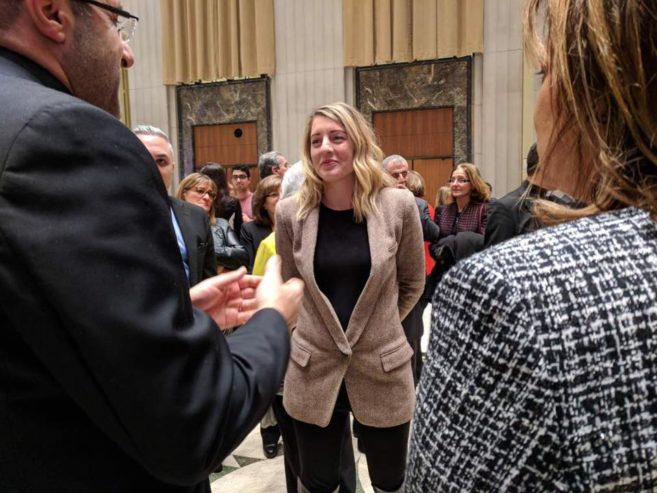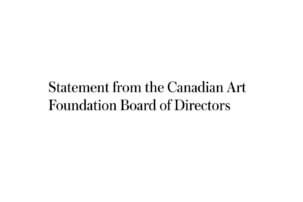 By the time most Canadians realized Chagall's La Tour Eiffel, deaccessioned from the National Gallery of Canada collection, was up for sale, it was already on preview at the Christie's showroom in Hong Kong. Photo: Instagram/@rebecca_wei_wei.
By the time most Canadians realized Chagall's La Tour Eiffel, deaccessioned from the National Gallery of Canada collection, was up for sale, it was already on preview at the Christie's showroom in Hong Kong. Photo: Instagram/@rebecca_wei_wei.
On Saturday, after heated public debate about its fate, Marc Chagall’s La Tour Eiffel (1929) went back on view at the National Gallery of Canada. But while many are glad to see it back, not everyone believes the questions raised around its December 2017 deaccessioning, and May 2018 withdrawal from a Christie’s auction, have been resolved.
“In my opinion, the story isn’t over. I’m really glad to have it back…but this whole thing was really mismanaged,” says Bryna Cohen, a former gallery worker who started a petition to fight the Chagall’s deaccessioning this spring. In particular, Cohen is disappointed with the National Gallery’s approach so far: “I feel they’re not really accepting ownership for their mistakes—and this was a big mistake.”
It’s a mistake that also cost a considerable amount of money—an estimated $1 million in auction withdrawal fees, reported by the Globe to have been paid off by arts patron and collector Michael Audain on the gallery’s behalf.
A National Gallery public service announcement, sent out via email to media last week, was brief in addressing the painting’s return: “The Eiffel Tower by Marc Chagall will go on display at the National Gallery of Canada on Saturday, June 23, 2018,” it read. “The painting will be on view in the European galleries on the second floor alongside Chagall’s earlier painting Memories of Childhood.”
The public service announcement continued to the effect that both Chagall paintings—essentially, the gallery’s entire collection of his works on canvas—would be on view until winter 2019 when it will undergo regularly scheduled maintenance and collection rotation. There was no mention in the document of the deaccessioning, auction slating and related controversy.
“Who is going to take ownership for what happened?” Cohen says. “My biggest worry—and it is a real worry—is this: What if this happens again? Who is going to be watching? Where is the system of checks and balances?”
Canadian Heritage has consistently communicated that it has no part to play in reviewing the events at the National Gallery, given that the gallery is a crown corporation operating at arm’s length.
Yet there still could be a role for the federal government to engage in determining what happened with the Chagall at the National Gallery of Canada—namely, in the Standing Committee on Canadian Heritage looking further into the matter and bringing clarity around those issues of accountability. But that option has already been turned down at least once.
“It should have gone to the Heritage Committee,” says NDP MP Pierre Nantel, who proposed just that a few weeks ago in the House of Commons. “They could have asked, How come it went so wrong? How could the cost have reached $1 million? But the members said, ‘No, we will not attempt to find more information about this.’ And I think that is quite unfortunate.”
Nantel also thinks that leaning on private donors for a $1-million bailout in this kind of situation sets a bad precedent of its own for Canada’s museum sector.
“You don’t want that kind of generous patron money to be used to close down conversation on issues of mismanagement,” says Nantel. “That kind of money should be used to better bring fine arts to Canadians. It could have been used to emphasize access to arts in community.” But the outcome here was different: “Because of a generous contribution, a story was closed.”








